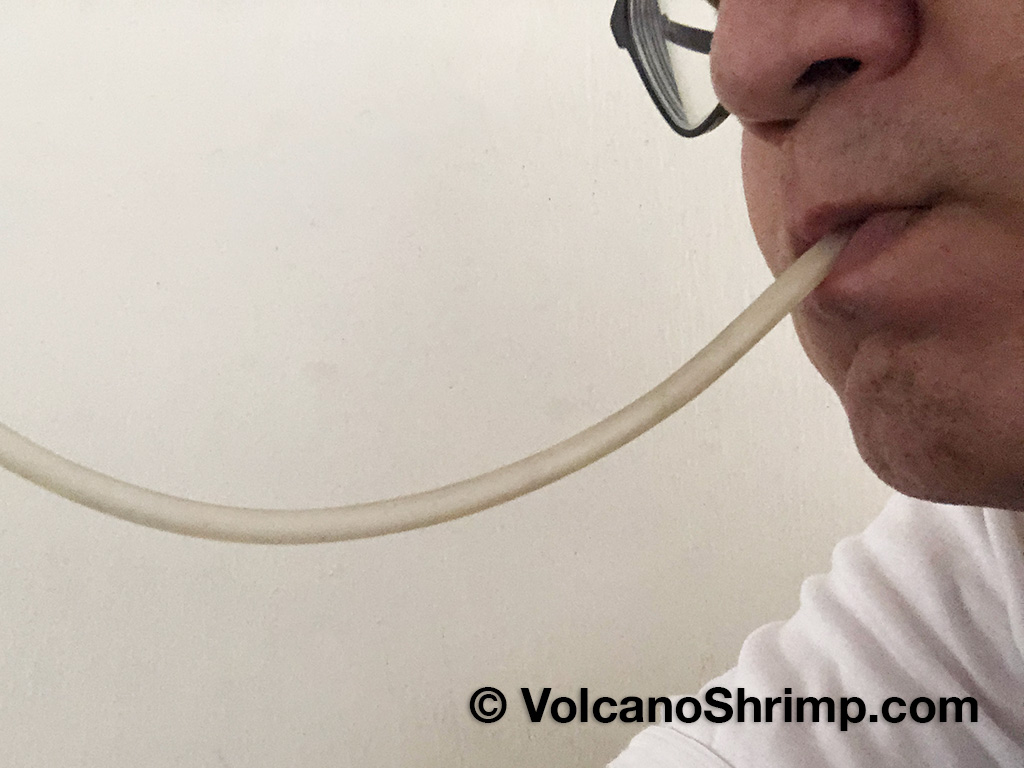How do I use a salinity refractometer to check the water salinity of my volcano shrimp (opae ula) tank ?
There are the digital or the analog version of the salinity refractometer.
Analog refractometer has a wide salinity range from 0 to 100 ppt.
Digital refractometer can show the measurement in second. It can also convert salinity between:
a) Practical Salinity Units (PSU)
b) Parts per thousand (ppt)
c) Specific Gravity (S.G.)

I use a Salinity Refractometer to read the salinity of the salt water
The salinity refractometer comes in a box and consists of a eye dropper and a refractometer.

An eye dropper pickup a water sample for measurement using a salinity refractometer
The front plate of the refractometer open up to show a blue prism.

The front plate of the refractometer open to show a prism
Take a water sample from your volcano shrimp (opae ula) tank.

Take a water sample from your volcano shrimp (opae ula) tank
Place 1 to 2 drops of water sample on the blue prism.

Put a drop of distilled water on the blue prism of the refractometer
Close the cover and stand below a light.
The refractometer need a light source to reflect the reading.

Look into the front eyepiece front of the salinity refractometer
Look into the eyepiece of the salinity refractometer. Make sure you are facing a light source.
When the viewing angle is incorrect, the light cannot reflect into the prism properly. You will see a white salinity chart.
But if the viewing angle is correct, you will see a blue and white salinity chart.

Girl looking into a salinity refractometer
There are 2 salinity chart on a salinity refractometer.
The right chart shows the salinity reading in ppt (Parts per thousand). The left chart shows the specific gravity (S.G.) reading.

The correct measurement is taken on the blue and white divider line.
This reading here shows a salinity of 1.015 S.G. or 20 ppt.

Salinity chart of a refractometer




























































